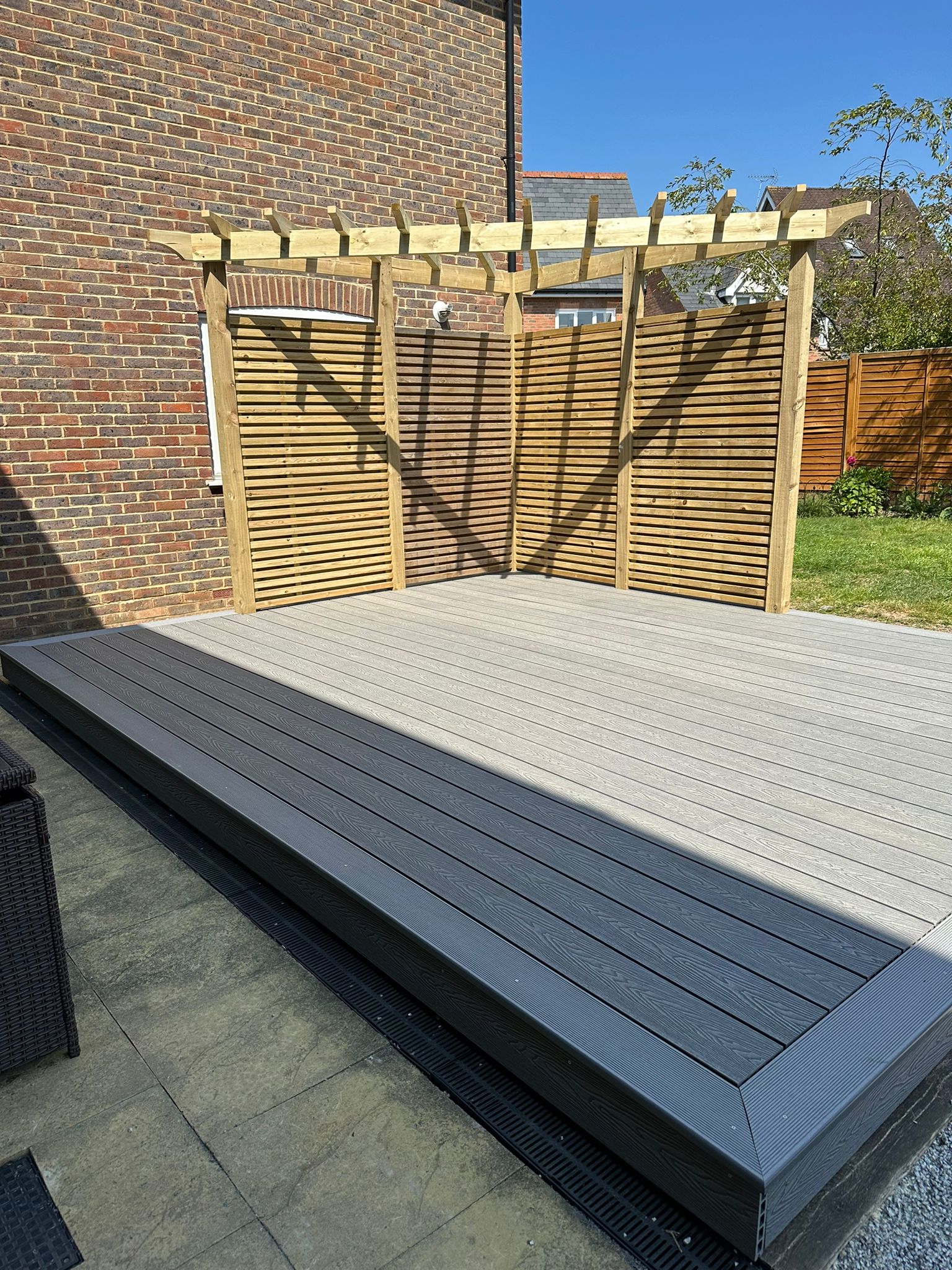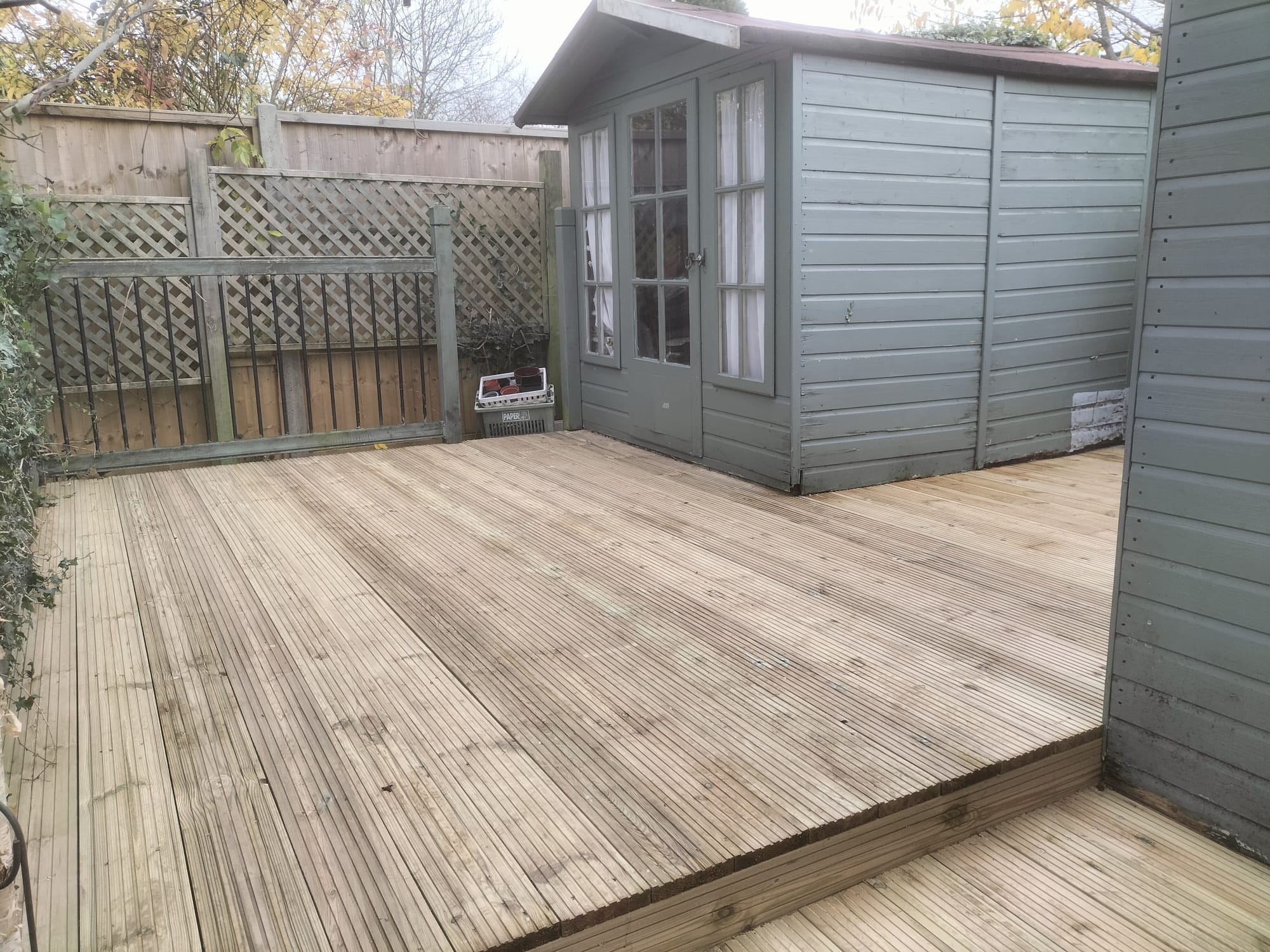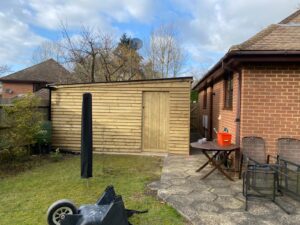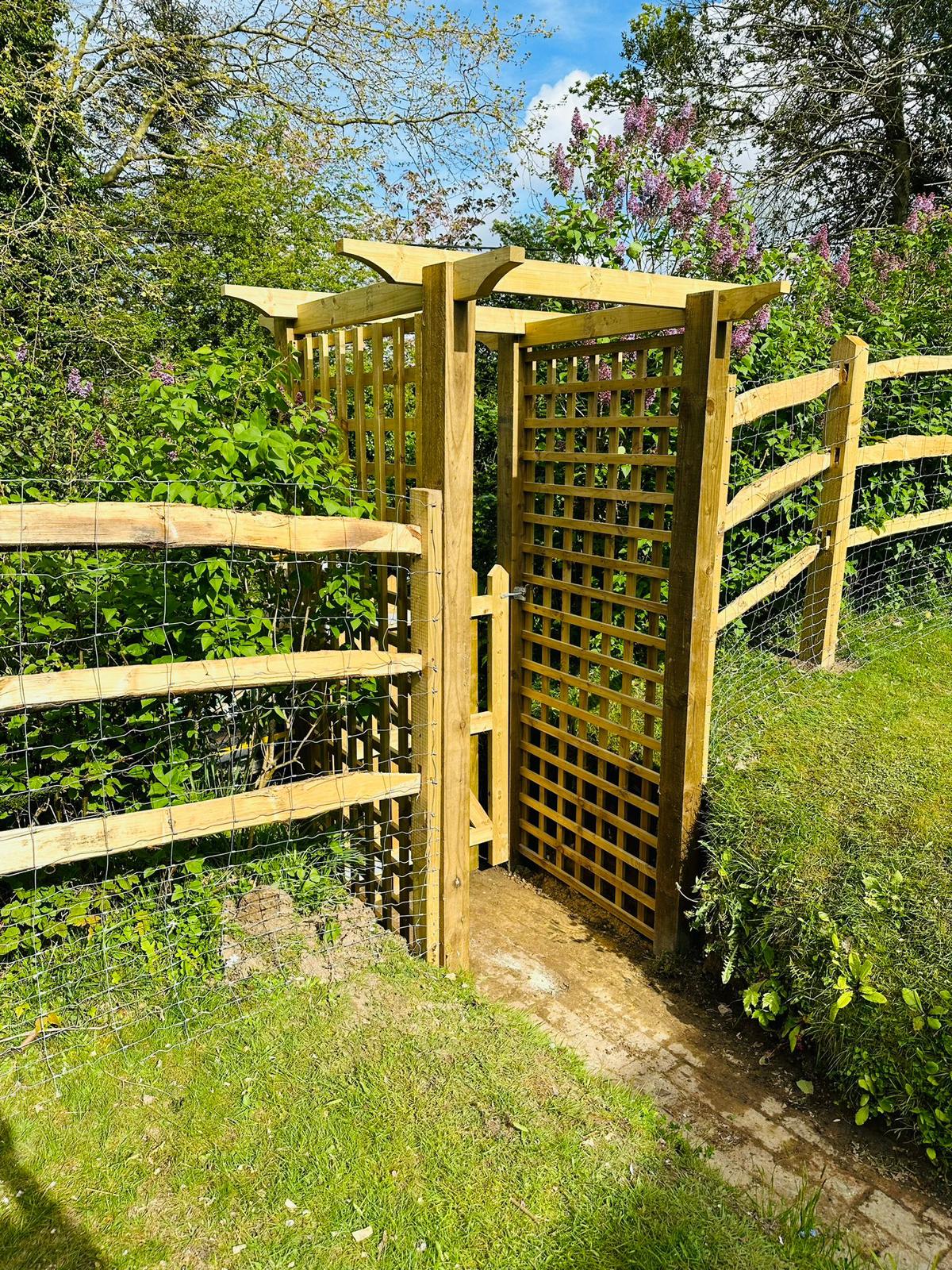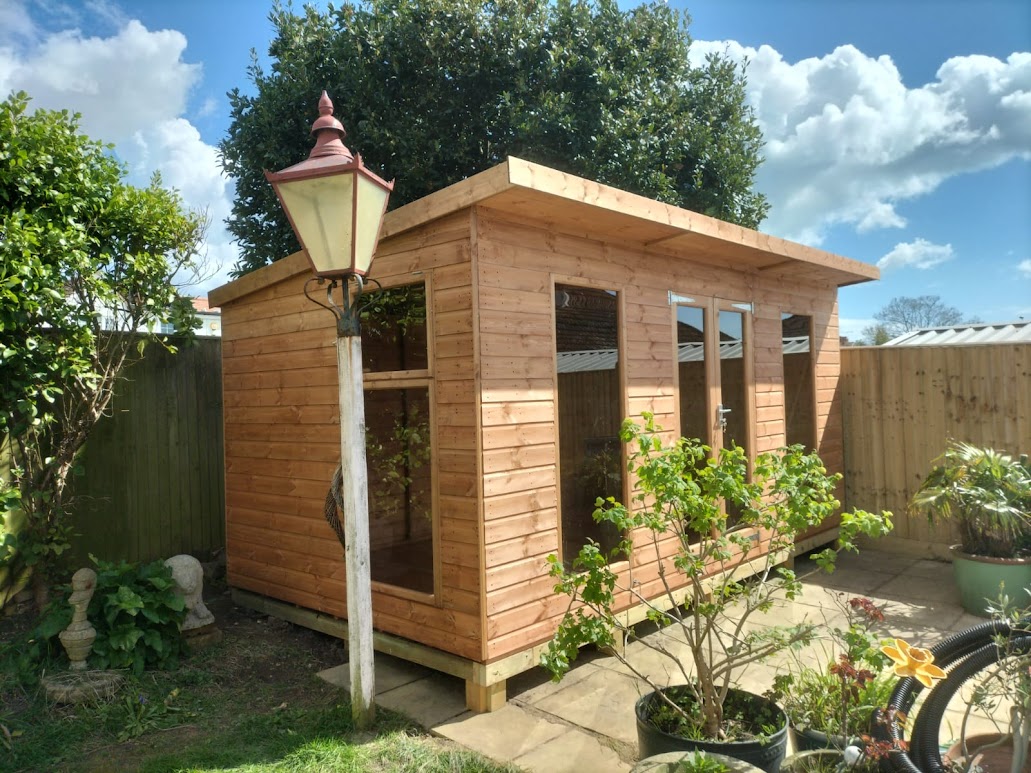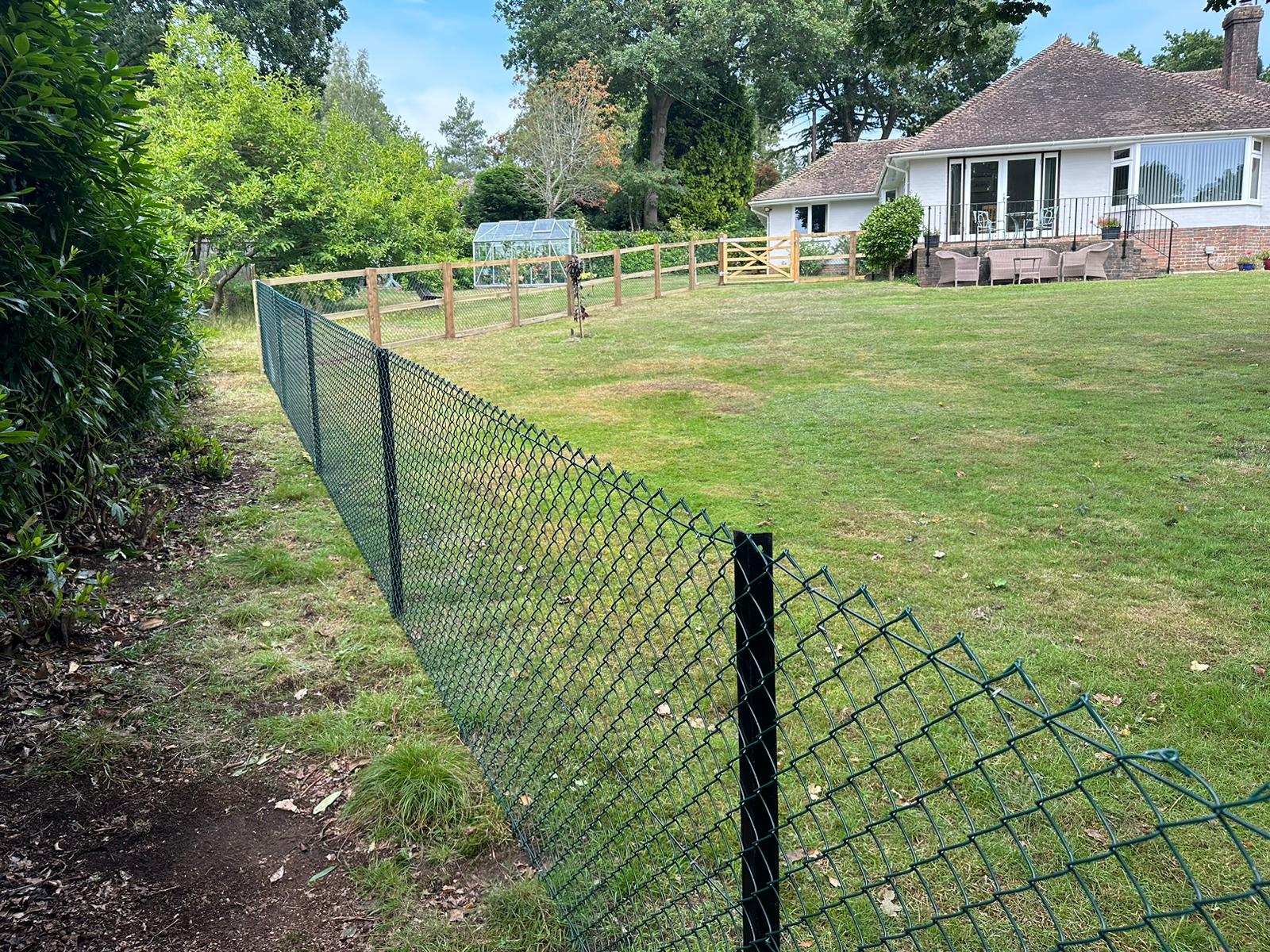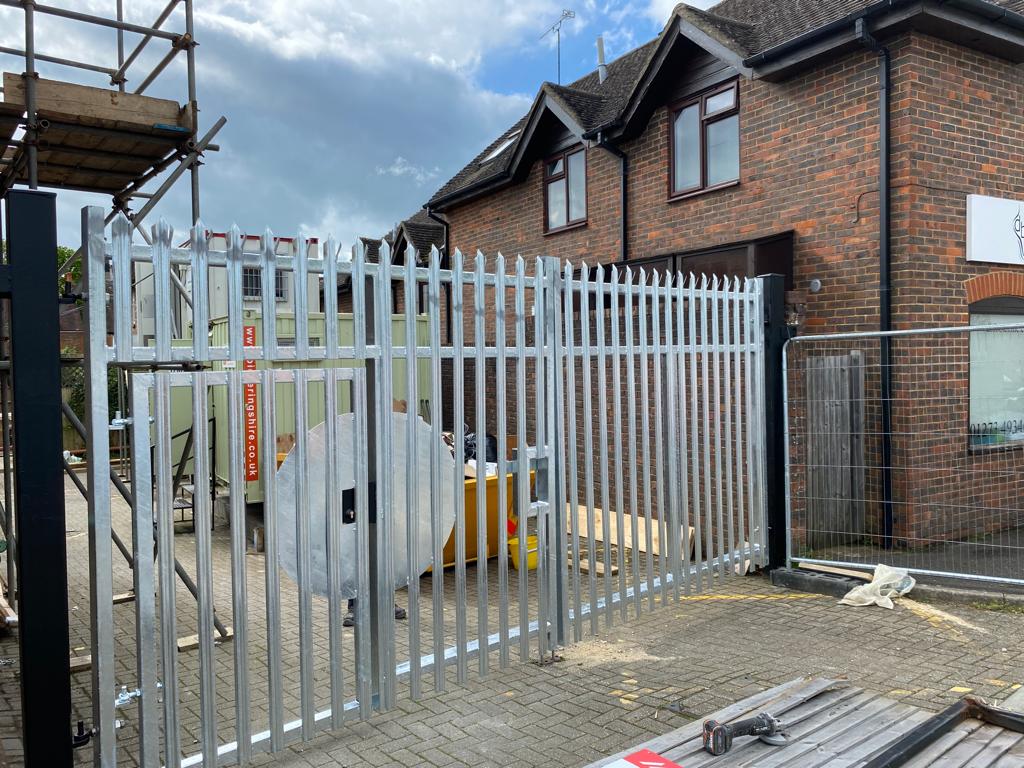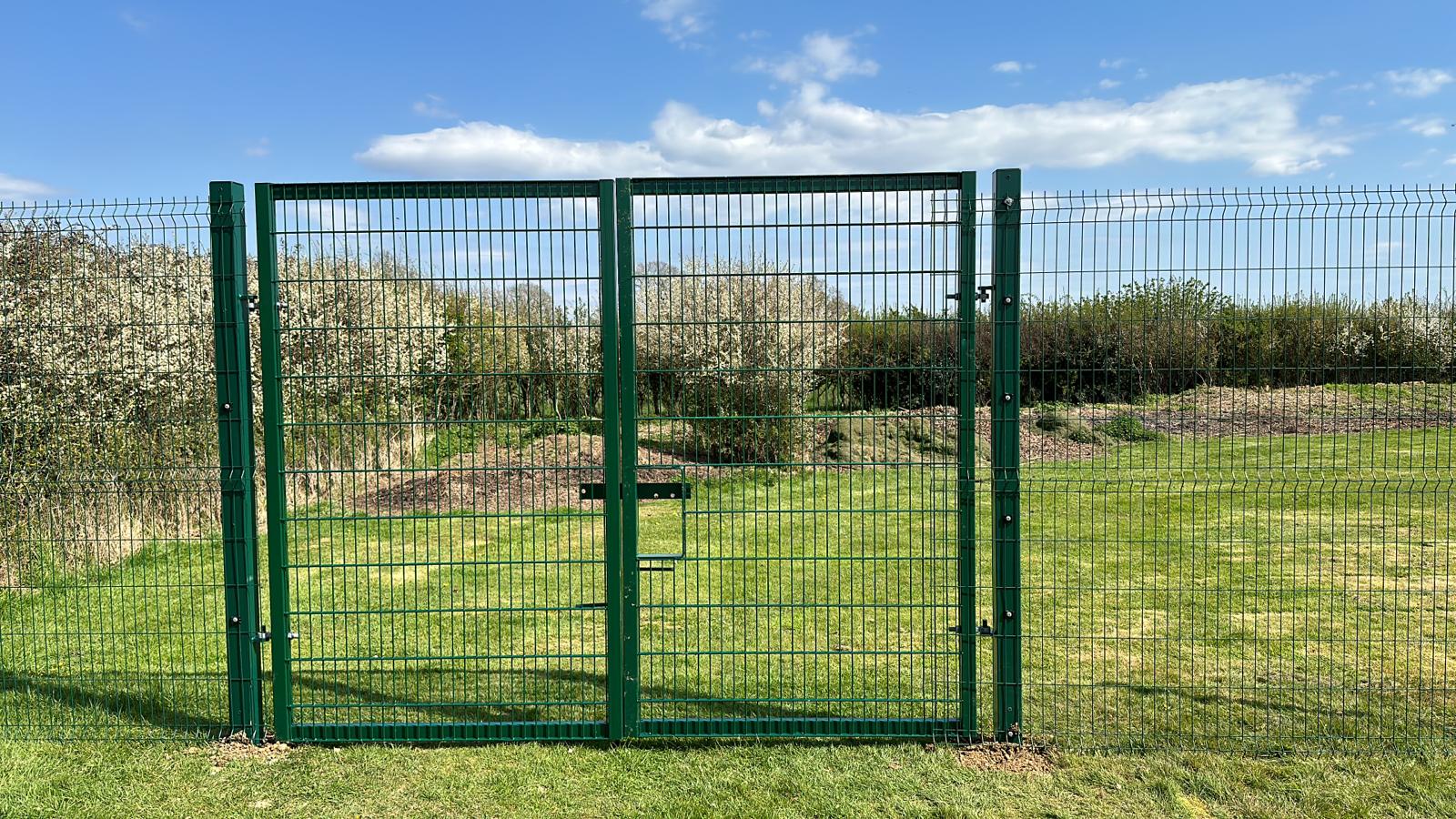Closeboard Fencing with Wooden Posts, Wooden Gravel Boards, and Cappings: Closeboard fencing with wooden posts and wooden gravel boards provides a natural and cohesive look to your outdoor space. The vertically arranged overlapping featheredge boards create a strong and solid barrier, offering excellent privacy and wind resistance. Wooden posts offer a traditional, charming aesthetic while supporting the panels. Wooden gravel boards at the base protect the fence from ground moisture, extending its lifespan. Cappings on top of the fence shield the boards from rain and add a polished finish.
Closeboard Fencing with Wooden Posts and Concrete Gravel Boards: Closeboard fencing with wooden posts and concrete gravel boards combines the natural beauty of wood with the durability of concrete. The featheredge boards form a solid and secure barrier, providing privacy and weather resistance. Wooden posts support the panels and add a warm, traditional touch. Concrete gravel boards at the base offer added protection against ground moisture and pests, ensuring a longer-lasting fence. This combination balances aesthetics and practicality, making it a great choice for any outdoor space.



